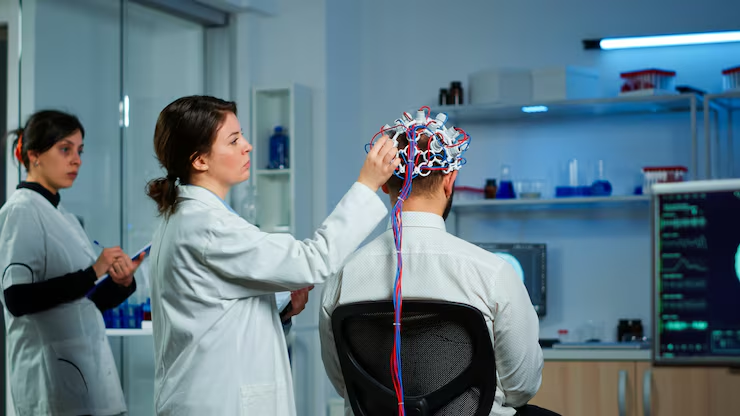For millions of stroke survivors, recovery can feel like a long, uncertain road. Medications and physical therapy help, but in many cases, they fall short of restoring lost functions. That’s where stroke stem cell therapy enters the conversation not as a miracle, but as a real, research-backed option gaining momentum.
So, what do the latest studies show? Can it really help stroke victims regain movement, speech, or independence? Let’s dig into the data and see what’s actually happening in the field of regenerative neuroscience.
Understanding Stroke Recovery and Limitations
Why Traditional Rehab Isn’t Always Enough
Strokes happen when blood flow to the brain is blocked or reduced, leading to brain cell death. Depending on the region affected, patients may lose the ability to walk, speak clearly, or even recognize loved ones.
Standard rehab focuses on retraining the brain through repetition. It works but only to a point. For some, progress plateaus. Others may be left with permanent impairments. That’s where new therapies, like stem cells, are offering hope.
Biological Repair Strategies After Stroke
Instead of simply managing symptoms, stem cell therapy for stroke victims works by targeting the root damage trying to repair brain tissue, stimulate new connections, and reduce inflammation.
By injecting specific types of stem cells (often mesenchymal or neural-derived) into the bloodstream or near damaged brain areas, researchers hope to:
- Regrow or protect brain cells
- Improve blood flow and oxygen delivery
- Support the formation of new neural pathways
This isn’t theoretical anymore. Several clinical trials show measurable changes in patients’ speech, motor skills, and cognition after treatment.
What Research Shows
Clinical Evidence and Breakthroughs
One standout study, published in The Lancet Neurology, involved stroke survivors with long-standing impairments. After receiving stem cell injections into targeted brain regions, many showed improved arm movement, balance, and even speech within months.
Other trials have focused on IV-administered stem cells. While less direct, these approaches still yielded gains in mood, memory, and walking speed.
Important takeaways:
- Most studies involve autologous cells (from the patient’s own bone marrow or fat)
- Safety profiles have been overwhelmingly positive
- Results tend to be better when therapy is given within 6–12 months post-stroke, though even chronic cases show promise
Research is ongoing, but early results are too significant to ignore.
Neuroplasticity and Stem Cells
Stem cells appear to support neuroplasticity, the brain’s ability to adapt and reorganize. When paired with rehab exercises, these cells may help “wake up” dormant areas of the brain or recruit new regions to take over lost functions.
This dual strategy; regeneration plus retraining, is at the heart of modern stroke recovery models.
Who May Be a Good Candidate for Treatment?
Not every stroke patient is eligible. The best candidates are often:
- Medically stable with no active infection or bleeding
- Between 18–75 years old
- Within 6 months to 2 years post-stroke
- Dealing with partial not complete loss of function
Doctors will typically use MRI scans and neurological evaluations to determine if there’s salvageable brain tissue or potential for improvement.
Types of Stem Cells Used in Stroke Therapy
The two most common types are:
- Mesenchymal Stem Cells (MSCs): Derived from bone marrow, fat, or umbilical cord tissue; known for reducing inflammation and promoting repair.
- Neural Stem Cells: More specialized; used in fewer trials but may offer more targeted repair for brain-specific damage.
Delivery methods include IV infusion, intracranial injection, and occasionally lumbar puncture, depending on the treatment protocol.
Real-World Applications and Clinics
Many clinics worldwide are now offering regulated stem cell therapy for neurological conditions. One such example is ZignaGenix, a provider offering safe, evidence-based therapy for stroke survivors using advanced stem cell protocols and guided administration techniques.
This treatment path is still evolving, but ZignaGenix ensures patients are properly screened and monitored, placing safety and outcomes first.
Explore Your Regenerative Treatment Options
Stroke stem cell therapy isn’t hype. It’s a real, measurable option showing results that traditional care hasn’t always delivered. For stroke survivors looking for more than symptom management, it represents hope grounded in research.
If you’re exploring your next step in post-stroke rehab, stem cell therapy may offer a new path especially when conventional therapy has hit the ceiling. Consult a medical provider who understands regenerative care, gets the imaging you need, and ask about realistic outcomes.
The future of stem cell therapy for stroke victims is still unfolding but the results so far are encouraging. And the best part? You don’t have to wait years to see if it’s right for you. So, rebuild movement, restore confidence, and redefine what’s possible.
Book Now And Explore How Regenerative Therapy Can Fit into Your Recovery Journey.
Frequently Asked Questions
Is stem cell therapy safe for stroke survivors?
Yes, current studies show a very low risk of adverse reactions, especially when using autologous stem cells. However, every case should be assessed individually.
When is the best time to consider therapy after a stroke?
Earlier it is better. Most research supports intervention within 6 to 12 months. But improvements have also been seen in chronic stroke cases over two years old.
Will insurance cover this treatment?
Not typically. Because stem cell therapy is still considered investigational in many regions, it’s often an out-of-pocket expense.
Can stem cells help with nerve pain or sensory loss?
Possibly. If you’re also dealing with nerve-related symptoms, learn about Stem Cell Therapy for Neuropathy: Can Stem Cells Help or Cure Nerve Damage?


